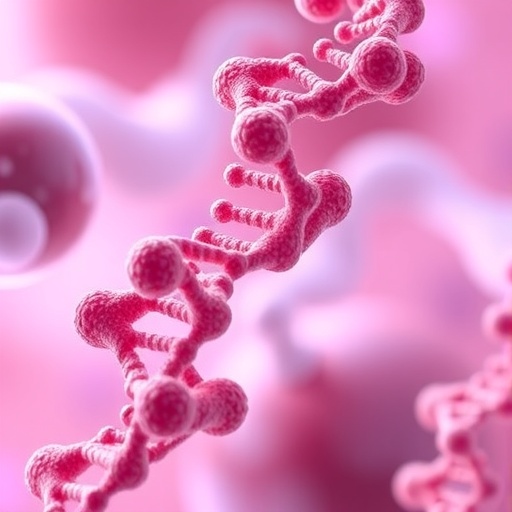In a groundbreaking study published on September 12, 2025, in the International Journal of Oral Science, researchers at Shanghai Jiao Tong University School of Medicine have uncovered a novel molecular mechanism driving chemoresistance in oral cancer. The study reveals how tumor hypoxia—characterized by reduced oxygen levels within growing tumors—directly activates the epidermal growth factor receptor (EGFR) independent of its traditional external stimulants. This activation is mediated by a newly identified long noncoding RNA (lncRNA) named EUDAL. This discovery challenges established paradigms in oncology, providing critical insight into why many oral cancer patients exhibit poor responses to chemotherapy.
Oral cancer remains among the most prevalent head and neck malignancies worldwide, with survival rates stubbornly low despite improvements in standard treatments such as surgery, radiation, and cisplatin-based chemotherapy. A significant obstacle in treatment is the tumor’s remarkable ability to adapt quickly, developing drug resistance that dampens the efficacy of chemotherapy. While hypoxia’s contribution to tumor aggressiveness and therapy failure has been recognized, the underlying molecular processes by which low oxygen modulates cancer cell signaling have been largely elusive.
The team led by Distinguished Professor Zhiyuan Zhang and Associate Professor Qin Xu has made a pivotal advance by illuminating an unorthodox pathway of EGFR activation driven internally by the cancer cell’s microenvironment rather than by ligand binding or mutation. EGFR is a well-characterized receptor tyrosine kinase that transduces growth signals upon activation by extracellular growth factors, stimulating cell proliferation and survival. However, under hypoxic conditions, this receptor is aberrantly switched on through a post-transcriptional regulatory mechanism orchestrated by EUDAL. This lncRNA binds EGFR directly, preventing it from undergoing ubiquitination and subsequent degradation by the proteasome-lysosome system.
Under physiologic conditions, EGFR protein turnover is tightly controlled by the c-Cbl and Grb2 adaptor proteins, which tag the receptor with ubiquitin molecules to signal its lysosomal clearance. Hypoxia-induced expression of EUDAL interrupts this homeostatic regulation by blocking the ubiquitination step. Consequently, EGFR is stabilized in an active conformation, perpetuating intracellular signaling cascades notably involving the STAT3 and BNIP3 pathways. This continuous activation fosters autophagy—a cellular recycling program that cancer cells exploit to sustain metabolic needs and resist cytotoxic stress from chemotherapy agents like cisplatin.
Functional assays in vitro and in vivo underscored the profound impact of EUDAL on tumor biology. Oral cancer cells expressing high levels of EUDAL exhibited heightened resistance to cisplatin, manifesting enhanced survival despite drug treatment. Conversely, silencing or inhibiting EUDAL restored chemosensitivity, resulting in marked reductions in cell viability. Animal models provided complementary evidence: tumors enriched in EUDAL maintained aggressive growth during cisplatin therapy, but combination treatment targeting STAT3 or the autophagy machinery alongside chemotherapy significantly impeded tumor progression.
Clinical correlations further substantiated the translational relevance of EUDAL. Analysis of tumor biopsies from oral cancer patients undergoing platinum-based chemotherapy revealed that elevated EUDAL, active EGFR, and STAT3 levels were predictive of poor therapeutic response and worse prognoses. This positions EUDAL not only as a mechanistic driver of resistance but also as a potential biomarker to stratify patients unlikely to benefit from conventional chemotherapy protocols. Such stratification could inform personalized treatment regimens, incorporating novel inhibitors that disrupt the EUDAL-EGFR axis or its downstream effectors.
The implications of this discovery extend beyond prognostication. Targeting EUDAL or its associated signaling pathways presents an innovative therapeutic avenue to circumvent hypoxia-induced drug resistance. Given that existing EGFR-directed therapies often rely on blocking extracellular ligand binding or inhibiting kinase activity, exploiting this RNA-mediated stabilization mechanism could address a previously unrecognized route of EGFR activation. This might lead to combination therapies integrating EUDAL antagonists to potentiate chemotherapy response and improve survival outcomes in oral cancer patients.
Moreover, this study reshapes our understanding of how the tumor microenvironment modulates oncogenic signaling networks. It elucidates a noncanonical mode of receptor activation whereby tumor hypoxia triggers intracellular molecular changes independent of extracellular receptor ligands or genetic alterations. This paradigm shift highlights the critical role of lncRNAs as functional regulators in cancer progression and drug resistance. The RNA landscape thus emerges as an underexplored target space with broad implications for oncology research and therapeutic development.
While these findings represent a significant step forward, further investigations are warranted to elucidate the full spectrum of EUDAL’s interactions and regulatory mechanisms in different tumor contexts. Additionally, research into safe and effective approaches to targeting lncRNAs in clinical settings remains a challenge. Advances in RNA-based therapeutics, including antisense oligonucleotides, small molecule inhibitors, or RNA interference technologies, may facilitate translation of these insights into viable treatment strategies.
Ultimately, this discovery shines light on a hidden vulnerability in oral cancer biology—the aberrant stabilization and activation of EGFR through a hypoxia-induced long noncoding RNA. By unveiling the molecular dialogue between oxygen deprivation, lncRNA function, and critical oncogenic pathways, this research paves the way for novel interventions designed to outmaneuver cancer resistance mechanisms. Such breakthroughs offer renewed hope for improving therapeutic efficacy and extending survival for patients battling this devastating disease.
Subject of Research: Cells
Article Title: LncRNA EUDAL shapes tumor cell response to hypoxia induced constitutive EGFR activation and promotes chemoresistance in oral cancer
News Publication Date: 12-Sep-2025
References: DOI: 10.1038/s41368-025-00396-2
Image Credits: Prof. Zhiyuan Zhang and Dr. Qin Xu from Shanghai Jiao Tong University, School of Medicine, Shanghai, China
Keywords: Cancer, Oncology, Drug resistance, Biomarkers, Genetics, Molecular biology, Cell biology, Diseases and disorders, Health and medicine
Tags: advancements in cancer biologychemoresistance mechanisms in oncologychemotherapy efficacy challengesepidermal growth factor receptor activationEUDAL long noncoding RNAhead and neck malignancieslow oxygen tumor environmentsmolecular mechanisms in oral cancernovel cancer treatment insightsoral cancer drug resistanceShanghai Jiao Tong University researchtumor hypoxia and cancer





